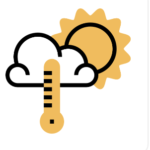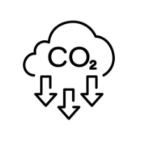3 Useful Weather APIs You Can Use In Zyla Labs Marketplace

 Compared to internally developing APIs, leveraging an API marketplace has several advantages. To begin with, API marketplaces make it simple for companies to locate the best API for their requirements. Businesses can be certain they are obtaining a high-quality API thanks to the multitude of services they offer, including ratings and reviews. Utilizing an API marketplace has the additional benefit of frequently being less expensive than building APIs from scratch.
In case you need to start using an API marketplace, we highly suggest using Zyla Labs Marketplace. This is a really useful API marketplace for developers and providers. And in the following list, we have prepared for you the best 3 weather APIs for you to start using right now!
Compared to internally developing APIs, leveraging an API marketplace has several advantages. To begin with, API marketplaces make it simple for companies to locate the best API for their requirements. Businesses can be certain they are obtaining a high-quality API thanks to the multitude of services they offer, including ratings and reviews. Utilizing an API marketplace has the additional benefit of frequently being less expensive than building APIs from scratch.
In case you need to start using an API marketplace, we highly suggest using Zyla Labs Marketplace. This is a really useful API marketplace for developers and providers. And in the following list, we have prepared for you the best 3 weather APIs for you to start using right now!
Atmosphere Methane Concentration API
 An effective tool that offers precise and current information on the amount of methane in the atmosphere is the Atmosphere Methane Concentration API. Monthly data from 1983 to the present is available; it is expressed as a mole fraction in dry air, parts per million (ppm). For scholars, scientists, and organizations interested in climate change and environmental monitoring, this API is a valuable tool.
Users can obtain historical data on methane concentrations through the API, allowing them to follow changes over time and spot trends. Research on reducing the consequences of methane emissions can be guided by this information and utilized to inform policy decisions.
An effective tool that offers precise and current information on the amount of methane in the atmosphere is the Atmosphere Methane Concentration API. Monthly data from 1983 to the present is available; it is expressed as a mole fraction in dry air, parts per million (ppm). For scholars, scientists, and organizations interested in climate change and environmental monitoring, this API is a valuable tool.
Users can obtain historical data on methane concentrations through the API, allowing them to follow changes over time and spot trends. Research on reducing the consequences of methane emissions can be guided by this information and utilized to inform policy decisions.
2. Koppen Climate Classification API
 In order to categorize the climates of the planet using local temperature and precipitation trends, the Koppen climate classification system is used by Koppen Climate Classification API. The method, which was created in the early 1900s by German scientist Wladimir Koppen, categorizes climates into five main categories: tropical, dry, temperate, cold, and polar. Each of these categories is further broken down into subcategories based on particular aspects of temperature and precipitation.
Scientists and researchers frequently utilize the Koppen climate classification system to investigate how climate affects numerous facets of life on Earth, such as agriculture, biodiversity, and human health.
In order to categorize the climates of the planet using local temperature and precipitation trends, the Koppen climate classification system is used by Koppen Climate Classification API. The method, which was created in the early 1900s by German scientist Wladimir Koppen, categorizes climates into five main categories: tropical, dry, temperate, cold, and polar. Each of these categories is further broken down into subcategories based on particular aspects of temperature and precipitation.
Scientists and researchers frequently utilize the Koppen climate classification system to investigate how climate affects numerous facets of life on Earth, such as agriculture, biodiversity, and human health.
3. Atmosophere Carbon Dioxide Concentration API
 Data on the amount of carbon dioxide (CO2) in the Earth's atmosphere is available in both historical and current form through the Atmosphere Carbon Dioxide Concentration API. The information is displayed as a mole fraction in dry air and is updated on a quasi-daily basis (ppm). The API spans the years 2010 until the present.
For researchers and groups tackling climate and environmental concerns, this API is an invaluable tool. It can be used to monitor long-term variations in atmospheric CO2 levels and to comprehend the causes of those changes.
Data on the amount of carbon dioxide (CO2) in the Earth's atmosphere is available in both historical and current form through the Atmosphere Carbon Dioxide Concentration API. The information is displayed as a mole fraction in dry air and is updated on a quasi-daily basis (ppm). The API spans the years 2010 until the present.
For researchers and groups tackling climate and environmental concerns, this API is an invaluable tool. It can be used to monitor long-term variations in atmospheric CO2 levels and to comprehend the causes of those changes.





